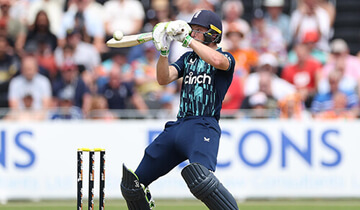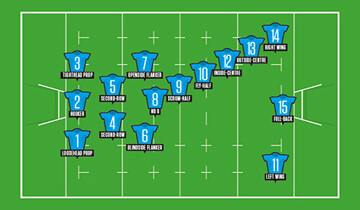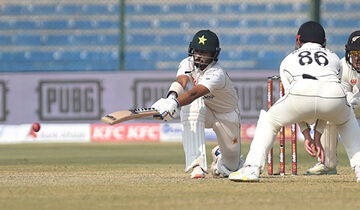Have you ever watched a soccer game where a player scores two goals and heard the commentators excitedly shout that they’ve scored a “brace”? While avid soccer fans may be familiar with this term, those new to the sport may wonder what exactly a “brace” refers to. A brace in soccer simply means that a player has scored two goals in a single game. In this article, we’ll take a closer look at the meaning and history behind this fun soccer term and provide examples of players scoring braces in important matches.
What Does “Brace” Mean in Soccer?
A brace is achieved when a player scores two goals in one soccer game. This term is primarily used in British English and is commonly heard during soccer matches in the United Kingdom, though it has spread to other parts of the world as well. The word “brace” refers to two of something, so by scoring two goals in a game, a player has secured a brace.
Some key things to note about braces in soccer:
- The two goals must be scored by the same player in a single match. Goals scored over multiple games do not count towards a brace.
- The goals can be scored at any point during the match - brace goals do not have to be consecutive.
- Braces can occur in league play, domestic cup games, Champions League matches, World Cup games, and any other competitive fixtures.
Origins and History of the Term
The term “brace” has been used to describe two of something since the early 1300s. It stems from the Old French word “braz” meaning “arms,” in reference to two arms being a pair. While the exact origin of using “brace” in relation to scoring is unclear, it has been a part of soccer vocabulary since the early days of the sport.
One theory is that “brace” took hold in medieval times when hunters would wear a brace (pair) of birds or other small game tied to their belts after a successful hunt. As two goals became a feat worthy of celebration in soccer, the existing use of “brace” to mean two was applied. The term has been in widespread use in soccer since at least the 1950s.
Notable Braces in Soccer
Some of the most memorable braces in soccer history include:
- Geoff Hurst - The only hat-trick scored in a World Cup final, Hurst’s three goals (brace + one) led England to victory over West Germany in the 1966 final.
- Diego Maradona - Maradona scored two unforgettable goals against England in the 1986 World Cup quarterfinal, including the infamous “Hand of God” goal.
- Romario - The Brazilian striker clinched the 1994 World Cup for Brazil over Italy with a brace in the final.
- Carli Lloyd - Lloyd remarkably scored a hat-trick (brace + one) in the first 16 minutes of the 2015 Women’s World Cup final to defeat Japan.
- Robert Lewandowski - The Polish striker scored a stunning brace in just 4 minutes against Wolfsburg in 2015, coming off the bench to turn the game around.
Scoring a brace is a significant achievement for any soccer player, indicating their skill in being able to find the back of the net multiple times in one game. Fans love cheering on players who secure braces for their team, especially when it leads to important victories. So now you know that when you hear of a player scoring a “brace,” it means two goals have been scored - and likely a great match has been played!
Why Is It Called a Brace?
Etymology
The word “brace” has its origins in Old French and Latin. The Old French word “braz” meant “arms” or “embrace.” This came from the Latin word “brachium” meaning “arm.” The idea of two arms coming together led to the meaning of a pair or something holding two things together.
In Middle English in the 14th century, the word became “brace” and took on meanings related to tension, tightness, or being fastened. A brace came to refer to anything providing tension or “brace,” like a strap or cord that ties two things together tightly. This is how we get the idea of a “brace” holding or fastening two things.
By the 1600s, the word “brace” was used in English hunting terminology to refer to two animals killed during a hunt. A “brace of partridges” meant a hunter had killed two partridges. This likely grew from the earlier “pair” meaning and the fact that the dead animals were tied together in pairs.
Hunting Terminology
In hunting traditions, the term “brace” became established as referring to a pair of game animals killed. If a hunter shot two rabbits or pheasants, they would refer to having bagged a “brace” of rabbits or pheasants.
The word was very common in English hunting jargon by the 1700s and 1800s. Gentlemen hunters would aim to shoot a brace of birds or rabbits on a hunting outing, meaning two animals with one shot. The gamekeeper would then tie the brace of animals together for easy carrying.
Using “brace” to mean two game animals followed naturally from its earlier “pair” meaning. Hunters extended it as slang within their sport to specifically mean a pair of animals killed for the hunt.
Scoring Two Goals
By the mid-19th century, the popular sports of soccer and rugby adopted the term “brace” from hunting slang. They used it to refer to a player scoring two goals in one game.
Just as hunters achieved a brace by bagging two animals, soccer and rugby players netted a brace by kicking or running two goals. Getting a brace became synonymous with scoring twice in a match.
The term “brace” emerged from the idea of a “brace of goals” or a pair of goals all scored by one player. A “brace of birds” and a “brace of goals” conveyed the same meaning - two kills for one person.
So the sporting use of “brace” grew out of the previous hunting jargon for two game animals killed. It transferred the same idea to scoring a decisive pair of goals or points within a single game.
Why Is It Called a Brace?
Etymology
The word “brace” comes from Old French “braz” meaning “arms” or “embrace”, which in turn came from the Latin “brachium” meaning “arm”. The idea of two arms coming together led to the meaning of a pair or something holding two things together.
In Middle English in the 14th century, “brace” took on meanings related to tension, tightness, and fastening. A brace was something providing tension or fastening two things together like a strap or cord. This is how “brace” developed the meaning of holding or fastening a pair of things.
By the 1600s, “brace” was used in hunting terminology to refer to two animals killed in a hunt. A “brace of partridges” referred to a hunter bagging two partridges. This grew from the earlier “pair” meaning and tying animals together in pairs.
Hunting Terminology
In hunting, “brace” became established as referring to a pair of game animals killed. If a hunter shot two rabbits or pheasants, they would have bagged a “brace” of rabbits or pheasants.
The term was common in English hunting language by the 1700s and 1800s. Gentlemen hunters aimed to shoot a brace of birds or rabbits, meaning two animals with one shot. The gamekeeper then tied the brace of animals for carrying.
Using “brace” to mean two animals followed from its “pair” meaning. Hunters extended it as slang within hunting to specifically mean two animals killed.
Scoring Two Goals
By the mid-19th century, soccer and rugby adopted “brace” from hunting slang for a player scoring two goals in a game.
Just as a hunter achieved a brace by bagging two animals, players netted a brace by scoring two goals. Getting a brace became synonymous with scoring twice in a match.
“Brace” emerged from the idea of a “brace of goals” or a pair of goals by one player. A “brace of birds” and a “brace of goals” shared the meaning of two kills for one person.
So the sporting use of “brace” came from the hunting jargon for two animals killed. It transferred the same idea to scoring a decisive pair of goals or points within a single game.
Famous Braces and Notable Players
Stats and records
Scoring two goals in a single game, known as a brace, is one of the most exciting achievements for a soccer player. Throughout the history of the beautiful game, some incredible goal-scoring records have been set thanks to players netting braces.
In top professional leagues and competitions around the world, braces have led the way to glory. Cristiano Ronaldo holds the record for the most braces scored in Spain’s La Liga, with 35 over the course of his career. Lionel Messi is not far behind with 34 braces in La Liga as well.
Looking at the English Premier League, Alan Shearer scored the most braces while playing for Blackburn Rovers and Newcastle United, netting 11 braces in the 1995-96 season alone. Sergio Agüero holds the record for most Premier League braces overall, with 36 across his time at Manchester City.
On the international stage, Gerd Müller of Germany earned the nickname “Der Bomber” after scoring an astonishing 68 braces for the national team. His compatriot Miroslav Klose also netted 29 braces for Germany, showcasing the attacking dominance the team enjoyed for decades.
Spotlight on prolific players
When discussing braces in soccer history, two names stand out for their incredible goal-scoring exploits: Cristiano Ronaldo and Lionel Messi.
Ronaldo, who has played for Sporting CP, Manchester United, Real Madrid, and Juventus, has scored an astonishing 56 braces in league play over his illustrious career thus far. His trademark free kicks, long-range strikes, and aerial dominance have allowed him to terrorize defenses consistently.
Meanwhile, Messi has racked up 55 league braces playing solely for Barcelona in La Liga. The Argentine maestro is renowned for his mesmerizing dribbling, visionary passing, and lethal finishing inside the penalty area. Very few defenders have managed to shut down Messi over his career.
While Ronaldo and Messi are in a league of their own, other prolific players like Luis Suárez, Robert Lewandowski, and Zlatan Ibrahimović have all scored 30+ league braces as well thanks to their lethal eye for goal.
Memorable braces
While statistics tell one story, specific braces in meaningful games have also cemented certain players’ legacies in the soccer history books.
Diego Maradona’s brace against Belgium in the 1986 World Cup semifinals included the infamous “Hand of God” goal, as well as one of the greatest individual goals ever scored. Marco van Basten struck an outrageous volley and long-range blast against the USSR in the 1988 Euro final to lead the Netherlands to victory.
Ronaldo’s brace for Real Madrid against Juventus in the 2017 Champions League final capped off one of the great individual seasons and saw Los Blancos make history as the first team to win back-to-back European Cups in the modern era.
Dennis Bergkamp’s dramatic brace for Arsenal against Argentina in the 1998 World Cup included one of the most sublime goals in a 2-1 win that sent the Netherlands to the semifinals. Landon Donovan secured his place in US soccer lore by bagging a brace against Algeria in stoppage time to win their 2010 World Cup group.
There are countless other magical braces that fans reminisce about fondly, whether they were vital equalizers in derby matches or piled on the misery against bitter rivals. The enduring appeal of a timely brace demonstrates how this achievement captures the essence of attacking soccer at its finest.
Conclusion
Scoring a brace in soccer is undoubtedly one of the great thrills for strikers, showcasing lethal finishing and tenacity in front of goal. As we’ve explored, a “brace” simply refers to a player netting two goals in a single game. The term has its roots in hunting terminology, later being adopted as slang in soccer during the 19th century.
While the best players in the world score braces regularly, they remain an impressive feat demonstrating clinical finishing. Fans will always remember incredible braces that have shaped soccer history, from Maradona’s genius against England to Donovan’s late heroics for the USA. Whenever a player bags a brace, it brings excitement and joy to supporters while striking fear into opposing defenses. The enduring appeal of the brace encapsulates soccer’s dramatic flair at its best.







































